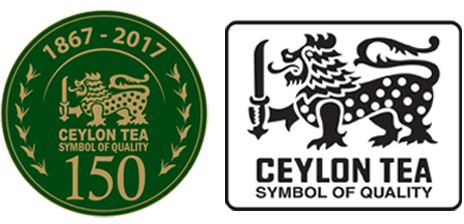Sri Lanka was formerly a British colony known as Ceylon, a name it kept for nearly a quarter-century after independence. It was during the British era that tea first began to be cultivated and manufactured here.
The story of Ceylon Tea begins with coffee. In the 1870s, coffee plantations were devastated by a fungal disease called Hemileia vastatrix or coffee rust, better known as “coffee leaf disease” or “coffee blight”. Planters experimented with cocoa and cinchona as alternative crops but failed due to an infestation of Heloplice antonie, so that in the 1870s virtually all the remaining coffee planters in Ceylon switched to the production and cultivation of tea.
In 1824 a tea plant was brought to Ceylon by the British from China and was planted in the Royal Botanical Garden in Peradeniya for experimental purposes. Further experimental tea plants were brought from Assam and Calcutta in India to Peradeniya in 1839 through the East India Company and over the years that followed. In 1867, James Taylor marked the birth of the tea industry in Ceylon by starting a tea plantation in the Loolecondera estate in Kandy. He was only 17 when he came to Loolecondera, Sri Lanka.
The original tea plantation was just 19 acres. In 1872 Taylor began operating a fully equipped tea factory on the grounds of the Loolecondera estate and that year the first sale of Loolecondera tea was made in Kandy. In 1873, the first shipment of Ceylon tea, a consignment of some 23 lb (10 kg), arrived in London. By the late 1880s, almost all the coffee plantations in Ceylon had been converted to tea. Similarly, coffee stores rapidly converted to tea factories in order to meet increasing demand. Tea production in Ceylon increased dramatically in the 1880s and by 1888 the area under cultivation exceeded that of coffee, growing to nearly 400,000 acres in 1899.
Tea was increasingly sold at auction as its popularity grew. The first public Colombo Auction was held on the premises of M/s Somerville and Company Limited on 30 July 1883, under the auspices of the Ceylon Chamber of Commerce. In 1894 the Ceylon Tea Traders Association was formed and today virtually all tea produced in Sri Lanka is sold at the auction supervised by this association and the Ceylon Chamber of Commerce. By 1927 tea production in the country exceeded 100,000 metric tons. A 1934 law prohibited the export of poor-quality tea.
By the 1960s, Sri Lanka’s total tea production and exports exceeded 200,000 metric tons per year and in 1965 Sri Lanka became the world’s largest tea exporter for the first time. In 1976, the Sri Lanka Tea Board was founded as were such other bodies as the Janatha Estate Development Board (JEDB), Sri Lanka State Plantation Corporation (SLSPC) and the Tea Small Holdings Development Authority (TSHDA) to supervise the estates thus appropriated by the state.
Sri Lanka was the official supplier of tea at the 1980 Moscow Summer Olympic Games, in 1982 at the 12th Commonwealth Games in Brisbane and again in 1987 at Expo 88 in Australia. In 1981, the country began importing teas for blending and re-exports and in 1982 commenced the production and export of green tea. In 1983, the CTC teas method was introduced. In 1992–1993 many of the government-owned tea estates which had been nationalized in the early 1970s were privatized.
Tea from Ceylon gained the reputation of being the finest in the world, and tea exports became the mainstay of the colonial economy. Housewives and restaurateurs across the globe grew familiar with the name of the country, learning that its appearance on a tin or packet reliably guaranteed the quality of the tea inside.
When the country changed its name to Sri Lanka in 1972, its premier industry was faced with a knotty problem. Ceylon was not only the former name of the country; it was also one of the world’s leading brands, familiar to consumers’ world over – a brand the industry had been actively promoting and investing in since the early 1930s. Abandoning it would deliver a setback from which there could be no easy recovery. And the cost of promoting and establishing an unfamiliar new brand – ‘Sri Lanka Tea’ – would be exorbitant.
Though opposed by some who demanded a complete break with the colonial past and a new start for the country, industry leaders managed to persuade the socialist government then in power to permit the continued use of the name Ceylon to refer to the country’s most famous product. Tea from Sri Lanka would still be marketed as Ceylon Tea; a priceless world brand had been saved.
